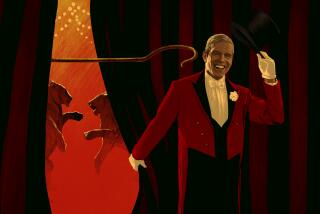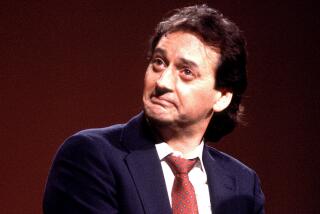‘The Larry Sanders Show’ changed the face of television
It’s easy to think that the HBO model was born with the debut of “The Sopranos” in 1999, but in reality the cable provider’s legacy of critically lauded, profoundly influential television started years before with Garry Shandling and “The Larry Sanders Show.”
During its six seasons and 89 episodes, “The Larry Sanders Show” -- with a veritable murderer’s row of talent serving as executive producers including Shandling, Brad Grey, Paul Simms, Peter Tolan and Fred Barron -- explored a vaguely fictionalized Hollywood via the production of a fictional late-night talk show of the same name. Debuting in 1992, the series found its roots in Shandling’s stints guest-hosting “The Tonight Show” in Johnny Carson’s absence.
The series boasted landmark performances by both Rip Torn and Jeffrey Tambor, as well as a stacked supporting cast that included Janeane Garofalo, Bob Odenkirk, Scott Thompson and Wallace Langham.
“Sanders” also moved away from the traditional multi-camera sitcom style of the era, opting for multi-cam use only when filming the talk show scenes, which were also shot on video with a live studio audience, as opposed to the film used for the “backstage access” scenes (which existed sans added laughter).
This transition from multi-cam served as the predecessor for much of modern television’s sitcom style, from NBC’s “The Office” to ABC’s “Modern Family” to Fox’s “Malcolm in the Middle,” while the use of multiple formats was a tactic used to great effect by CBS’ “How I Met Your Mother.”
But “Sanders” was also deeply influential for reasons beyond its technical prowess.
Within its acerbically exaggerated Hollywood, there exists no wholly sympathetic audience surrogate, paving the way for antihero comedy for years to come. Even the most obvious of the show’s successors, HBO’s own “Curb Your Enthusiasm,” provides Cheryl (Cheryl Hines) as an outlet from the barrage of Larry’s (Larry David) unpleasant, if hilarious, temperament, just as “30 Rock” found that sanity in protagonist Liz Lemon (Tina Fey) as she attempted to wrangle her own show-within-a show.
The series didn’t shy away from the casually profane language of modern life, a trend that carried through long after its time at HBO had ended, particularly in the network’s marquee dramas, like “The Sopranos” and “Deadwood.”
In writing about the series in 2010, New York Magazine’s television critic Matt Zoller Seitz perhaps described “The Larry Sanders Show” better than anyone could, by harking back to an apocryphal line about Velvet Underground: “Three thousand people bought their first album, and every one of them started a band.”
That was “The Larry Sanders Show.” A series that, though overlooked by audiences of its era, took root in the souls of Hollywood’s creatives and changed the very face of television as we know it.
Follow Libby Hill on Twitter @midwestspitfire
More to Read
The complete guide to home viewing
Get Screen Gab for everything about the TV shows and streaming movies everyone’s talking about.
You may occasionally receive promotional content from the Los Angeles Times.







